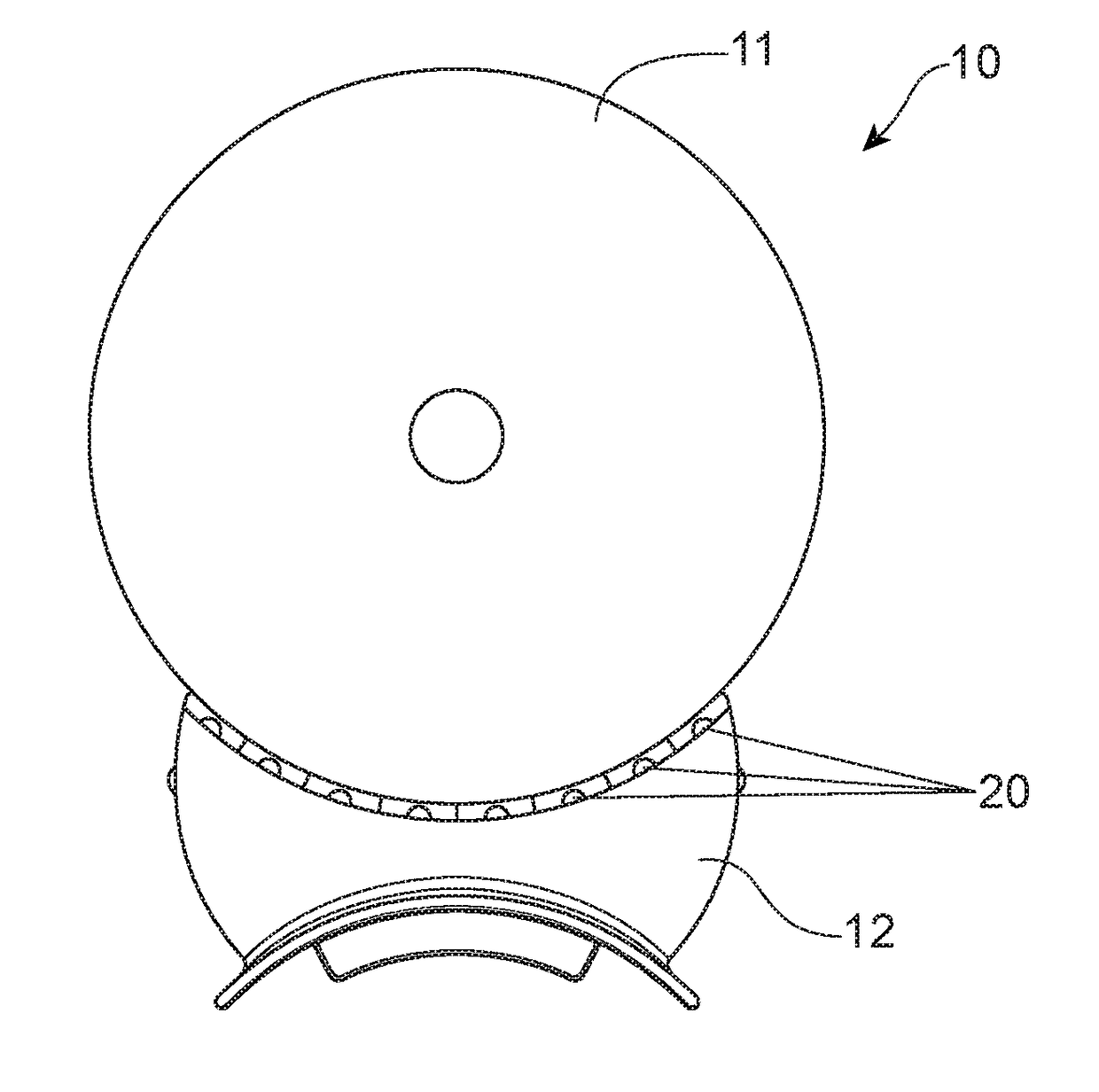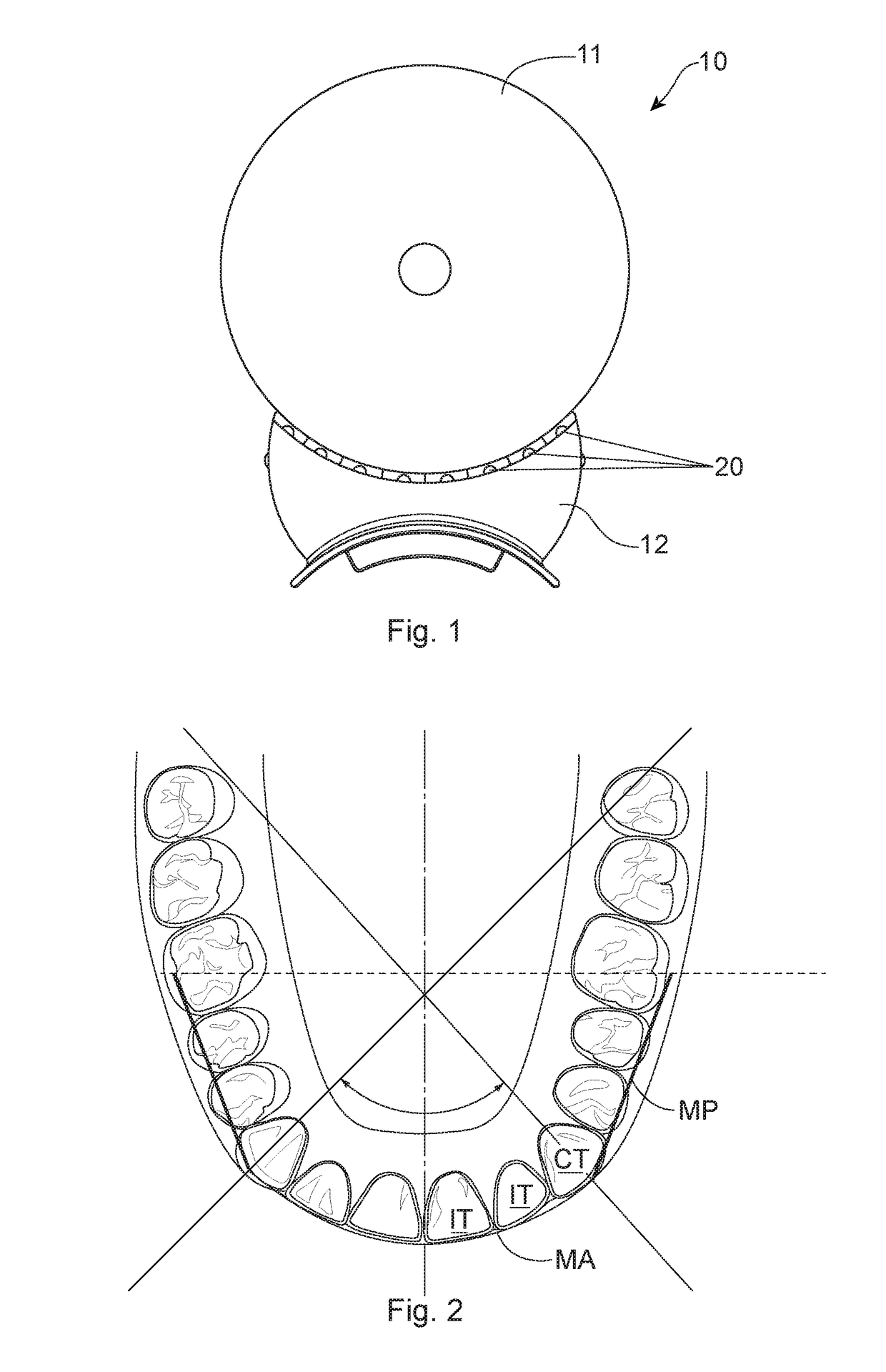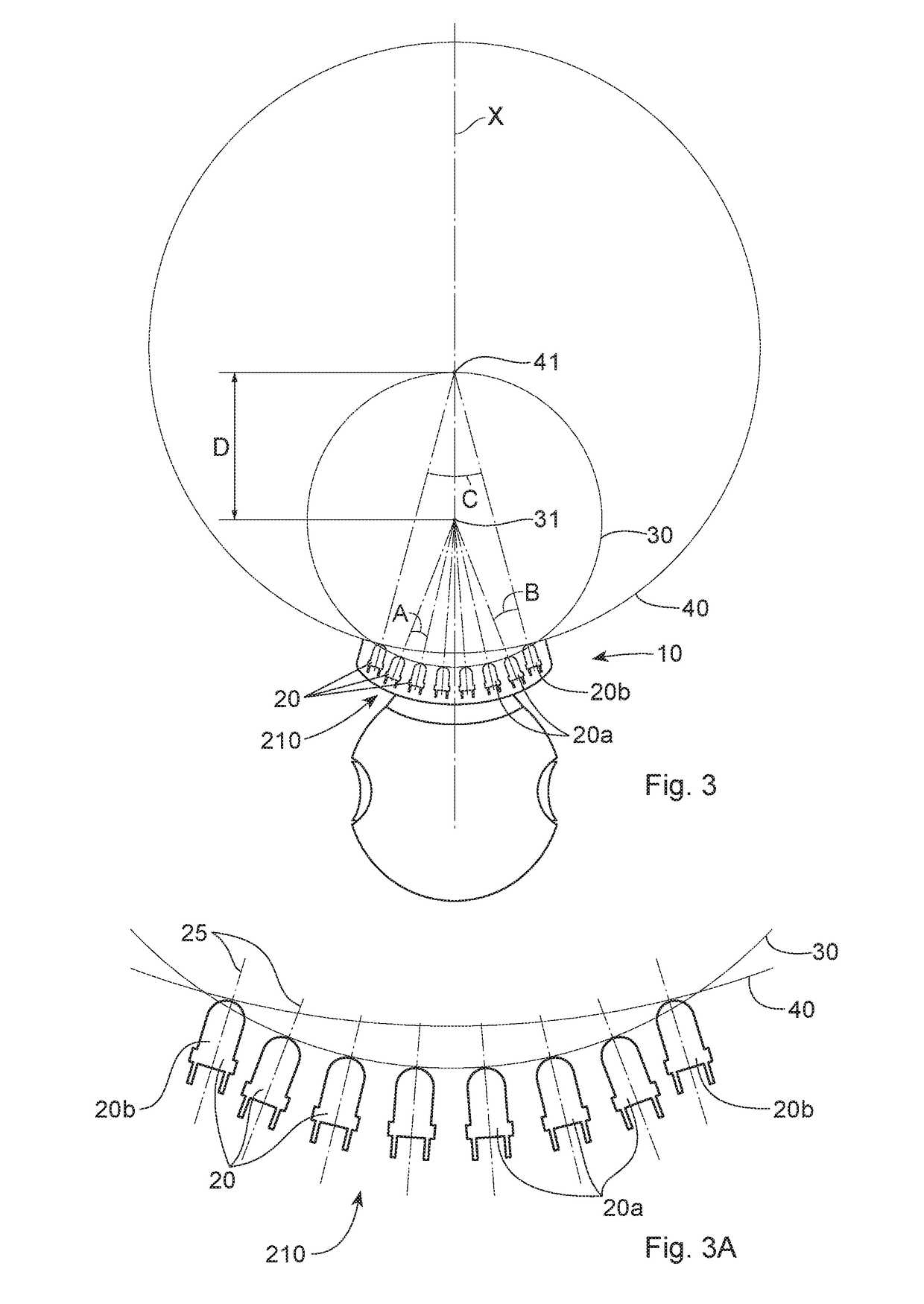Tooth-whitening device
a tooth whitening and tooth technology, applied in the field of tooth whitening devices and methods, can solve the problems of increasing tooth sensitivity and soft tissue irritation, affecting the user experience, and affecting the effect of the consumer, so as to facilitate the device's 180-degree versatility
- Summary
- Abstract
- Description
- Claims
- Application Information
AI Technical Summary
Benefits of technology
Problems solved by technology
Method used
Image
Examples
Embodiment Construction
[0050]Blue light with a peak intensity of 450-470 nm has been demonstrated to accelerate tooth whitening when delivered at intensities exceeding 41.5 mW / cm2, 108 mW / cm2, or 134.7 mW / cm2, see a commonly assigned US Patent Application Pub. No.: 2013 / 0295525 A1, the entire disclosure of which is incorporated herein by reference. Further clinical trials have shown that blue light with a peak intensity of 450-470 nm delivers accelerated tooth whitening over a tooth surface when delivered at peak intensities as low as 13 mW / cm2. If the typical human maxillary and mandibular anterior teeth surface area is approximately 10 cm2, approximately 130-1300 mW of light with a peak intensity at 455-470 nm is expected to deliver whitening of all “smile” teeth.
[0051]Light-Emitting Diodes (LEDs) are familiar to those in the art as exemplary forms of delivery of substantially monotonic light (λP1 / 2<50 nm) such as that used to demonstrate tooth whitening acceleration. Commonly reported efficiencies for ...
PUM
 Login to view more
Login to view more Abstract
Description
Claims
Application Information
 Login to view more
Login to view more - R&D Engineer
- R&D Manager
- IP Professional
- Industry Leading Data Capabilities
- Powerful AI technology
- Patent DNA Extraction
Browse by: Latest US Patents, China's latest patents, Technical Efficacy Thesaurus, Application Domain, Technology Topic.
© 2024 PatSnap. All rights reserved.Legal|Privacy policy|Modern Slavery Act Transparency Statement|Sitemap



